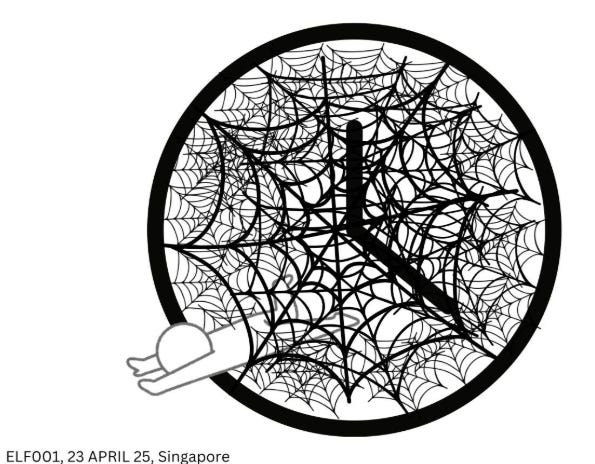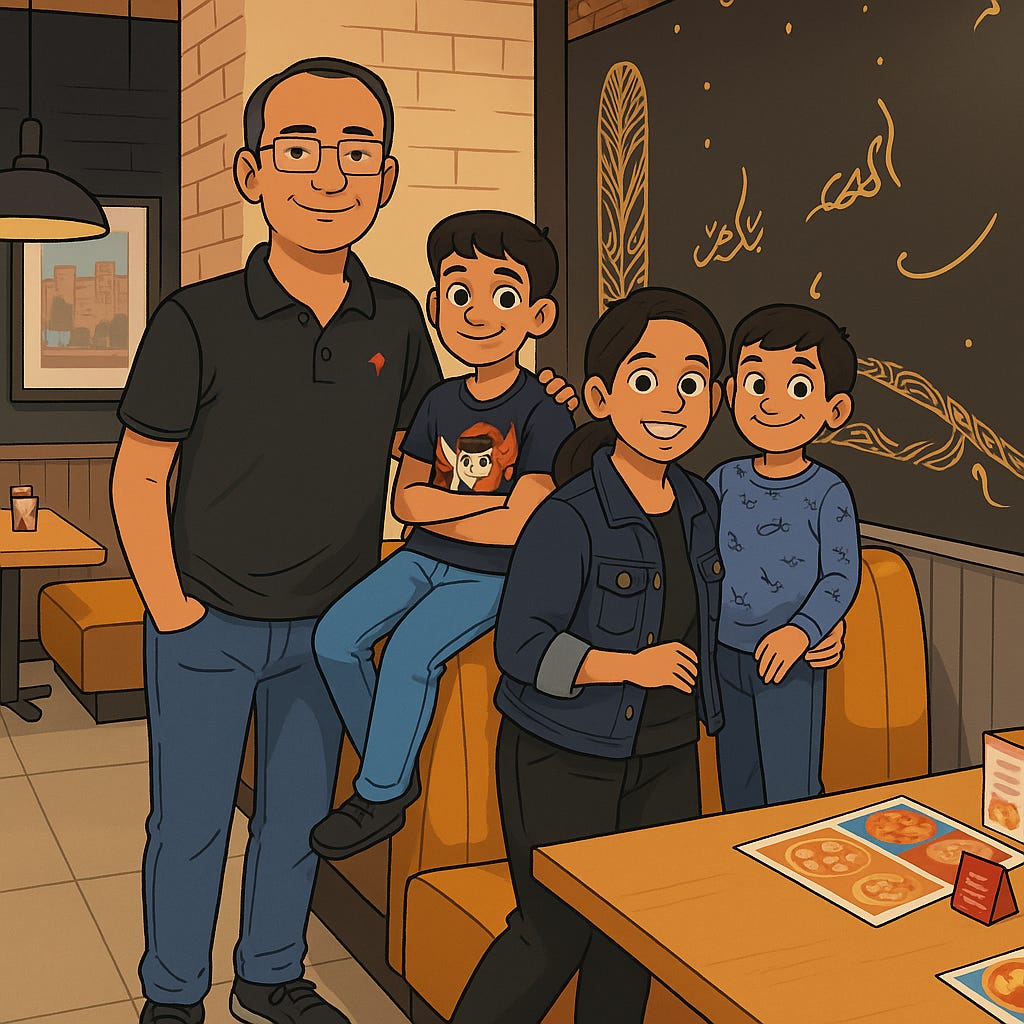Chapter 20 : Beneath the Surface: A Root Cause Journey
Every visible problem hides a deeper cause. Root cause analysis helps uncover true reasons beneath surface symptoms for real solutions.
INTRODUCTION
This Week in Daily Discovery: Pattern Recognition
This month in the Daily Discovery series, we shine a light on a tool that sits at the heart of every real solution: Root Cause Analysis.
Imagine trying to fix a machine that keeps breaking down, only to replace one part after another — while missing the single fault causing the entire chain reaction. Or imagine repeatedly apologizing in a relationship without ever understanding the real issue beneath the hurt. Root cause analysis is the disciplined approach that helps us break this frustrating cycle. It’s the structured process of looking beyond surface-level symptoms to uncover the true, underlying factors driving a problem. It’s how doctors diagnose, engineers repair, leaders transform systems, and individuals reshape their lives.
In this issue, we explore how root cause analysis sharpens our ability to understand complexity, cut through confusion, and design lasting solutions. Through real-world examples, frameworks like the 5 Whys and fishbone diagrams, and everyday applications, we’ll show how this method empowers better problem-solving across every part of life.
And this week, we zoom into why it matters so deeply for personal growth. Our frustrations, habits, and emotional patterns often have hidden roots — and when we apply root cause analysis to our own lives, we gain not just clarity, but the power to truly change. There is another concept called the Pareto that you could use to identify what root cause needs attention. Read More and tell us about it - and how you applied it.
Here’s the list of traits that will help you to improve your identification of the root cause.
Curiosity → Digging deep to uncover underlying issues.
Logical Thinking → Mapping effects to their origins.
Open-Mindedness → Considering multiple possible causes.
Differentiate Symptom and Root Cause → Identifying what’s superficial versus fundamental.
Perseverance → Investigating thoroughly despite complexities.
Validation → Testing assumptions against evidence.
Inquiry → Asking probing questions to identify causes.
Systematic Approach → Following a structured method for analysis.
Documentation → Recording findings for clarity and accountability.
Storytelling without pattern recognition is like music without rhythm. This week, we begin sharpening the lens—so we can tell clearer, deeper, more meaningful stories. Ready to begin?
STORY BY BLCOP | ILLUSTRATIONS BY ELF001 | CHALLENGES BY ELF001
A. THE PASSAGE
The refrigerator in Grandma Elara’s kitchen used to just quietly hum, like a soft lullaby for her pickles and milk. It had always kept things perfectly cold. But lately, that hum was rougher, louder, and her butter was getting all soft, and the ice cream was practically soup. A grumpy feeling settled over Grandma Elara. She just knew something was wrong.
The big problem was super obvious: the fridge wasn’t cold enough.. She tried turning the knob, wiping down the dusty back bits, even checking the squishy rubber seal around the door. Nothing helped. Everything inside was just…lukewarm. It wasn't completely broken, but it definitely wasn't doing its job.
Her granddaughter, Chloe, who’s a big electronics and science whiz, immediately guessed it was the "engine" part, what they call the compressor. "It's just old, Grandma," she said. "Probably worn out." Chloe even pulled up videos on her phone showing noisy fridge engines. Grandma Elara almost believed her. It seemed like the simplest explanation. But the fridge's loud hum wasn't a clunky, broken sound; it was more like a tired sigh.
Grandma Elara remembered the words of her mechanic father, “Listen to the whole car, not just the loud parts.” She had built up knowledge over the years, even a bit about electronics. She isn’t going to back down because of what her 12 year old granddaughter said, she dug deeper and examined the plug along with the spot where the cord met the wall. That seemed weirdly warmer than usual. Grandma used her trusty old lamp to test the wall spot, it flickered a bit at first and then shone fine. But the lamp’s cord felt a bit warmer as well. The thought struck her.. The basement breaker box.
The breaker box was old with faded scribbles. Grandma found the kitchen plug switch. It wasn’t flipped off but when the switch was barely touched, it trembled.. That area felt much warmer.
Aha.. It wasn’t the dying engine, but the real problem - the wiring hidden in the walls. Grandma had broken beneath the surface hum.
This story about Grandma Elara’s refrigerator and its hidden problems mirror a few issues we may face in our lives, the persistent and nagging issues, which we often misdiagnose and blame on other things. We’re often unaware about its origin until something deep triggers it and we are left more stranded in our diagnosis and search for answers. Root, cause and analysis are further explored by Grandma with her findings in the story.
Think of that feeling of exhaustion or irritation which just floats up once in a while to ruin your mood and leaves you scratching your head. These are the symptoms we often notice. We might blame a stressful college project or a family member getting on our nerves. We just see this as the surface problem and leave it be there, why?
Just like Chloe pointing to the “compressor” or engine of the faulty fridge in the story, we often tend to latch on to the nearest possible reason you can think of: “I’m too stressed”... “My job is too demanding and ebbs my energy”.. These are easy targets we can think of to blame on in our haste and when time passes, we are prone to think of less logical things to blame on. We’ve also tried some quick fixes as well, maybe a blissful cup of coffee or a weekend getaway to “paradise” and so on. These quick breaks we take may clear our mind for the time being and help us to relax but the problem or the underlying "hum" still exists. We’re just delaying the inevitable.
The real breakthrough? When we really start to look deeper like Grandma examining the power cord and outlet of the fridge.. This is a somewhat self reflection. Maybe that constant tiredness isn’t actually just because of work but it may be because of a deep resentment or grudge you hold. Maybe a friendship has been irritating because of the unspoken expectations and needs that might’ve been in the friendship’s “wiring” all along.
Sometimes in our lives certain events may have happened which bring anxiety or bring us back into unresolved trauma which had been quietly tucked away somewhere. These bring up bad memories and lurk beneath our emotional surface. These eventually cause loose wirings and are highlighted in our emotional wiring. This loose connection is always there in us.
I'd like to say that we should always try to "tighten" those loose connections in our life by trying to identify the subtle changes in your emotional wiring system. You can try to use mindfulness to realize when you feel that familiar feeling or use the Why method where you repeatedly ask why to your questions to get to a solid answer to try to rewire that system of yours. However, what most of us still do is change the "compressors" or the surface reasons of our problems which can lead to confusion and will not get us anywhere in our journey to resolve problems, dig deeper!!..
Curiosity + Inquiry + Open-Mindedness
When facing a recurring frustration or emotional “hum” in your life, how often do you pause to ask multiple ‘why’ questions — not just stopping at the first answer — and allow yourself to explore even unexpected or uncomfortable possible causes?
→ (This challenges you to break past initial assumptions and probe deeply using curiosity and inquiry, rather than defaulting to the nearest explanation.)Logical Thinking + Systematic Approach + Validation
How do you map the connection between the symptoms you experience (like stress or tiredness) and the potential root causes, and what methods can you apply to test whether your identified cause is truly the underlying source — not just a convenient assumption?
→ (This encourages you to bring a structured, evidence-checked mindset to your self-analysis, avoiding misleading shortcuts.)Perseverance + Documentation + Differentiate Symptom and Root Cause
When was the last time you systematically documented your patterns of stress, frustration, or emotional triggers over time — and what insights might emerge if you tracked them carefully to separate surface patterns from deeper wiring issues?
→ (This emphasizes the importance of sustained effort, organized observation, and accountability in distinguishing true causes from visible symptoms.)
JOIN US THIS WEEK ON MAY 31 @ THE EXPO and let’s discuss your academic notes on Root Cause Analysis from the Story Telling module of the DAILY DISCOVERY SERIES. ZOOM ID : 769 712 5558 (click ZOOM for the link or use the ZOOM ID)
PASS CODE : MEET
8:30 PM - 9:30 PM SINGAPORE TIME
7:30 PM - 8:30 PM VIETNAMESE TIME
6:00 PM - 7:00 PM INDIAN STANDARD TIME
4:30 PM - 5:30 PM OMAN TIME
The agenda this week
Guest Speaker for the week
score board - Self reflection for Wybie and Mihf : the quality of the program is determined by the filling up of the document and self reflection and responses to feedback already provided.
challenges for the week
practical use of school knowledge.
New chapter 21 - a New Topic awaits : STORY TELLING - Emotional Intelligence.
B. THE CHALLENGE - Root Cause Analysis
Most people focus on what’s right in front of them — the immediate problems, the surface frustrations, the quick fixes. But ELF001’s challenge series invites you to take a different path: to pause, reflect, and uncover what’s really driving the patterns in your life. It’s about asking not just what’s wrong, but why it’s happening, and following that trail all the way down to the root.
Root cause analysis is important because it allows us to uncover the real issue behind any problem and identify the correct problem to solve. Without this skill, we risk offering solutions that only treat the surface symptoms, leaving the true cause untouched — and without addressing the real cause, no solution can fully succeed.
Through hands-on exercises and guided reflection, you’ll move beyond quick patches and develop the skills to trace deeper causes, make meaningful connections, and build lasting solutions.
You’ll take on challenges like:
🔍 Dig Deeper, Not Wider — focusing your energy on uncovering depth, not just collecting more surface clues.
🎲 The 5 Whys Game — a playful yet powerful exercise to peel back layers of assumptions.
⚡ Trace the Spark — following the chain of events back to the true origin of a problem.
Along the way, you’ll begin asking:
Why does this keep happening?
What patterns am I missing?
What’s the real issue beneath the noise?
This isn’t just about solving academic challenges or improving performance. It’s about thinking like a problem-solver, an innovator, a detective — someone who knows that real change comes when you address the causes, not just the symptoms.
Why Do We Do This Challenge? (Academic Edition)
We take on this challenge because true learning is about more than memorization or effort — it’s about understanding. Whether you’re working through difficult assignments, preparing for exams, or reflecting on mistakes, your brain is constantly searching for cause-and-effect patterns to help you grow.
By practicing root cause analysis, you are:
🔍 Figuring out why certain study approaches fail or succeed.
🧠 Strengthening understanding by connecting new ideas to deeper insights.
🛠️ Targeting the real issues that block progress, not just the obvious ones.
💡 Improving decision-making by identifying the factors that truly matter.
✏️ Enhancing critical thinking across subjects like science, literature, and history.
With ELF001’s challenge, you’ll sharpen your awareness of the hidden drivers behind your learning habits, emotional responses, and growth edges. Once you uncover those, you can make meaningful, lasting changes — and that’s what transforms not just your grades, but your whole approach to learning.
Because real success doesn’t come from working harder.
It comes from solving the right problems.
Our Audience Reads from the following locations : Please help to spread the word….
C. SESSIONS SUMMARY
By ELF001
Chini the Cactus & A Stronger Mind (by MIHF)
We began our Learning Space session with a familiar friend—Chini the Cactus, led by MIHF.
MIHF asked:
“Do you remember the cactus?”
Many of us smiled. Chini has been part of our sessions before, guiding us through breathing exercises in a fun and calming way.
This time, MIHF refreshed our memory with a breathing warm-up:
Breathe in through the nose, raising your arms up.
Breathe out forcefully through the nose, bringing your arms down.
We did this five times, feeling the rhythm of our breath syncing with Chini’s gentle energy.
Then came a twist:
“Before I teach you another breathing exercise today, did you know that us cacti have scales and spines instead of leaves?”
That led to a new cactus move:
Inhale with arms stretched sideways and elbows bent.
Exhale through the mouth as elbows come together.
Just like that, we were grounded—and ready to dive deep.
Digging Deeper with Mr. C66 — Root Cause
Mr. C66 walked us through the idea of Root Cause Analysis, using real business stories to make the concept practical and relatable.
Fun fact : C66 is a code name for 6 foot 6
One idea really stuck with me:
“Problems are like the leaves of a tree—what we see on the surface is just the symptom. To fix the real issue, we must look at the roots.”
To guide us, he introduced the “5 Whys” technique—asking “Why?” five times to peel back the layers and reach the core of a problem.
He warned us:
“If we rush to fix things without asking the right questions, we might fix the wrong thing.”
This really showed us that patience and a calm mind are essential when solving complex problems.
Challenge Spotlight: JFP – Trace the Spark
Challenge #2: Trace the Spark
JFP shared a heartfelt story about something he’s really good at now: football.
“If he liked something, I liked it too.”
It all started with his older brother. They played football together, and JFP’s early love for the game was shaped by trying to be like him. Over time, though, JFP discovered his own style, preferences, and favorite teams—different from his brother’s, creating a playful rivalry at home.
Football became more than just a game. It became a space where JFP could be his “real self”, building skills, confidence, and identity.
🧠 While it wasn’t a direct Root Cause Analysis, his story mirrored it:
Tracing a strength back to where it began—and discovering what sparked it.
BLC OP asked JFP several questions that made the reflection even deeper:
“What is something you can take away from football?”
“Is being your true self something you’ve gotten from it?”
“Is the biggest lesson hard work—or something else?”
Challenge Spotlight: ELF – What I’ve Achieved
I (ELF) shared my own story through Challenge #3: What I’ve Achieved.
While I’ve explored boxing, military skateboarding, gymming, and slowball, I focused on football—my root journey.
I started playing at age 9, inspired (again!) by my older brothers. At first, I couldn’t pass well or control the ball. But through time, effort, and sheer passion, I improved. Today, I play for the same club as my brothers, support both men’s and women’s Barcelona teams, and have even won medals and a trophy.
“Football became a big part of me.”
“It made me more confident, focused, and free.”
Earlier in the session, I asked:
“Why can’t we just say it directly? Why must we keep asking?”
It was my way of expressing frustration with the slow, step-by-step nature of Root Cause Analysis. But by the end of my own story, I could see its value.
MIHF challenged me with two great questions:
“How did you use Root Cause Analysis in this story of yours?”
“If you didn’t, how could you have used it?”
That helped me see how even our achievements have roots—and we can use RCA to understand how we got here.
Inspiration from MIHF: The Man Who Traveled the World Without Legs
To close the session, MIHF shared the story of Ghanim Al-Muftah, a Qatari motivational speaker born with Caudal Regression Syndrome.
“Here’s a man who traveled the world without legs.”
Despite his physical limitations, Ghanim:
Climbed mountains
Scuba-dived
Became a global speaker
Spoke at the FIFA World Cup 2022
This wasn’t just a story—it was a reminder.
Our challenges don’t define our limits. Our mindset does.
It echoed what Miss BCDF had shared earlier:
“The strength of the body does not matter if the mind is not strong.”
Final Thought:
During the session, I noticed something special—many of our TLS friends love playing football. It makes us strong and active. But it also trains our minds—with strategy, teamwork, and decision-making.
Whether we’re solving real problems or chasing a ball on the field, one truth remains:
Our minds must be strong—not just our bodies.
Towards the end DAV said they expected all members to submit the challenge for evaluation. “Richard and Emma, I’m hoping you can complete the challenges. Else you lose you score - Do you agree to send in ? Yes! they answered.”
D. Evaluations
1. MIHF — Facilitator & Mindset Anchor
Role: Breathing guide, mindset storyteller, and analytical challenger
Highlights:
Brought continuity and grounding with Chini the Cactus.
Introduced new breathing techniques in a relatable way.
Shared Ghanim Al-Muftah’s story to expand participants' mindset.
Asked powerful questions to ELF about Root Cause Application.
Strengths:
✅ Creativity in engagement
✅ Emotional connection
✅ Clarity and pacing
✅ Deep questioning
Score: 9.5/10
Capability: High-level facilitator with emotional intelligence, structure, and inspiration.
2. Mr. C66 — Guest Educator on Root Cause Analysis
Role: Concept teacher
Highlights:
Explained Root Cause Analysis through the memorable metaphor of a tree (leaves vs. roots).
Introduced the “5 Whys” framework clearly.
Encouraged structured thinking and calm analysis.
Strengths:
✅ Conceptual clarity
✅ Real-world examples
✅ Patience-building approach
Score: 9/10
Capability: Experienced mentor who simplifies complex thinking and provokes reflection.
3. JFP — Presenter: “Trace the Spark”
Role: Challenge #2 participant
Highlights:
Shared a clear and personal story of football passion.
Traced origins back to sibling influence and personal transformation.
Open to deeper questioning by BLC OP.
Strengths:
✅ Emotional honesty
✅ Clear storytelling
✅ Willingness to reflect
⚠️ Slightly light on applying RCA framework fully
Score: 8.5/10
Capability: Reflective thinker with storytelling potential and room to stretch into deeper structural analysis.
4. ELF001 — Presenter: “What I’ve Achieved”
Role: Challenge #3 participant
Highlights:
Shared a multi-sport background with focus on football.
Reflected on emotional and mental transformation.
Asked a raw question during the RCA segment:
“Why can’t we just say it directly?”
Showed tension with RCA method, but later embraced it.
Strengths:
✅ Self-awareness
✅ Vulnerability
✅ Determination
✅ Learns through doing
⚠️ Still developing structured reflection
Score: 8/10
Capability: Emotive explorer with strong experiential learning; gains insight through practice and challenge.
5. BLC OP — Session Lead & Questioner
Role: Session leader
Highlights:
Encouraged challenge sharing.
Asked thoughtful, layered questions to JFP.
Reiterated the importance of submission and reflection.
Ensured accountability (esp. for Emma & Richard).
Strengths:
✅ Clarity in facilitation
✅ Coaching mindset
✅ Follow-through
⚠️ Did not share own challenge openly
Score: 8.5/10
Capability: Strong facilitator-coach with a sharp questioning style and group guidance skills.
Emma — Quiet but Responsive
Role: Observer / Light participant
Highlights:
Responded when prompted by BLC OP.
Shared that she enjoys football.
Was invited to reflect on how Root Cause relates to something she's good at.
Strengths:
✅ Willing to share briefly
⚠️ No challenge presented
⚠️ Did not expand ideas or ask questions
Score: 2.8/10
Capability: Emerging voice — beginning to relate personal interests to concepts. Needs more push to build confidence and clarity in expression.
Richard — Passive Attendee
Role: Observer
Highlights:
Did not speak during the session.
Was personally addressed by DAV and BLC OP to submit the challenge.
Verbally agreed to submit, but no engagement captured in transcript.
Strengths:
✅ Responsive to commitment
⚠️ No verbal participation
⚠️ No visible reflection or initiative
Score: 2.0/10
Capability: Silent presence — requires stronger encouragement or a spark to engage and contribute meaningfully.
DAV79 — Accountability Anchor
Role: Participation monitor
Highlights:
Delivered clear expectations near the end.
Personally addressed Emma and Richard.
Ensured commitment with a light push:
“Else you lose your score. Do you agree to send in?”
“Yes!” they responded.
Strengths:
✅ Direct accountability
✅ Leadership presence
✅ Time-anchored direction
Score: 8/10
Capability: Reliability and structure enforcer, helping keep participants on track.
E. WRAPPING UP
Submit the challenge they presented (or worked on) via Google Form.
Reflect on Chapter 20 – Root Cause Analysis and submit a comment.
Read and Prepare the new challenge : Chapter 21
Stay prepared for bootcamp in the following month in Hanoi, indicating deeper engagement ahead - this will be a competition and you are expected to do your contribute and do your best.







i think robot sometime can help people a lot
The story above shows that alot of times, we simply google our issues and use the top answer as the truth. If we truly want to answer our question, further investagation is needed.